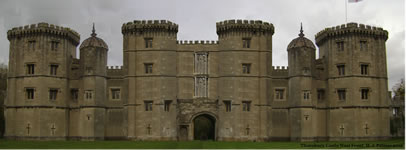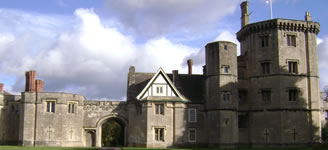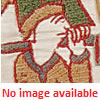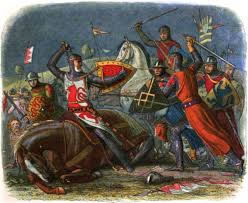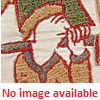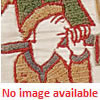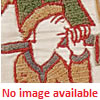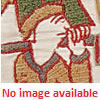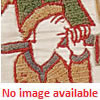|
A potted history of Thornbury Castle
| HISTORIC HOMES – THORNBURY By Black and White; printed in 1908 in the Gloucestershire Echo |
|
Edward the Elder |
|
Matilda of Flanders |
|
The commencement of the history of Thornbury carries us back a thousand years or so, when Aylward a cousin of King Edward the Elder, carried out from here the peaceful mandates of the wise King Alfred, and begat a son, Algar, who continued the good works of Aylward and became the father of Berthric, the manner of whose end serves to show how a woman's love when slighted can turn to vindictive hate. This Berthric was sent as Ambassador to the Court of Baldwin of Flanders, where his fair face and goodly form seem to have sown the seeds of love in the heart of Matilda of Flanders, whose none too maidenly attention caused him to hastily return to England; but there the matter did not end, for becoming the wife of Duke William of Normandy soon after the Conquest, she persuaded her husband to confiscate all Berthric’s possessions, and confined him in Winchester prison, where he eventually died. |
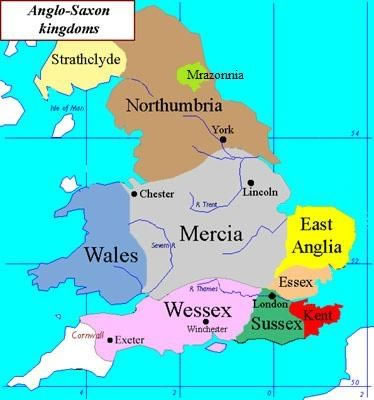 |
Robert Fitzhamon was next owner of Thornbury, which he had conferred on him as a reward for his subjection of South Wales, and married his daughter, Sibella, to Robert the Consul (the famous son of Henry I), who was made Earl of Gloucester. Their grand-daughter wedded Richard, Earl of Hereford, one of the barons who played a prominent part in adjusting the wrongs of the nobles under King John, and who, with his son, Gilbert, was present at the signing of the Magna Carta. This Gilbert, who fought on the side of the Barons in 1217, and was taken prisoner by the Earl of Pembroke (whose daughter he made his wife) left an only son, a man of much distinction under Henry III, upon whom sixty knights were constantly in attendance. He opposed the ruinous and extravagant policy of Henry III, was commissioned by the King and Barons to convey to the French Parliament King Henry’s resignation of the Duchy of Normandy, and filled many other important offices, only to perish miserably by poison at the table of the Queen’s uncle. |
|
Gilbert de Clare |
|
King John I |
|
|
His son, another Gilbert, continued to fight on the side of the Barons, and to him it was that Henry III and his son surrendered after the Battle of Lewes in 1264, though at the Battle of Evesham in 1264, the Red Earl fought on the side of the Royal party against Montfort and restored them to power. Joan Plantagenet, daughter of King Edward, was given in marriage to Earl Gilbert., all of whose possessions were settled upon her, but the Earl dying six years later she clandestinely married a knight Ralph de Monthermer, which greatly incensed the king. Her son, the last male de Clares, fell at the Battle of Bannockburn in 1314, when by marriage Thornbury passed to the Staffords, whose descendants reside there for 400 years, and the tale of whose misfortunes makes such sad reading. |
|
|
|
Ralph, the beautiful and attractive son of the second Earl of Stafford, was cruelly murdered by the King’s half-brother, Sir John Holland, which foul deed caused his father such great grief that he left England for the Crusades, leaving his bones on his way to the Holy Land at the Island of Rhodes. Both his second and third sons died young, and the fourth was slain at the Battle of Shrewsbury in 1403, Humphrey, the infant son of this latter Earl, succeeding to his father’s estates and those of his uncle Humphrey, Earl of Buckingham, and to that fine property Maxtoke Castle, in Warwickshire. Created Duke of Buckingham and a Knight of the Garter. Humphrey linked his fortunes with those of Henry VI, and whilst fighting valiantly for the Lancastrian cause, fell at the Battle of Northampton, his body being found amid a heap of slain near the tent of the defeated King. |
|
|
|
His son having perished five years previously at the Battle of St Albans, the Duke was succeeded by his grandson, Henry Stafford, Duke of Buckingham, who assisted in the placing of King Richard III upon the Throne, an action for which he appears to have afterwards been deeply penitent, for we learn that, when summoned to appear at Court, he replied by gathering a great host in the West of England and Wales in order to do battle against the King; but floods prevented the union of Welsh and English armies, both lost heart and returned to their homes, forsaking the duke, who, with a reward of a thousand pound upon his head, made his way to Maxtoke Castle, and in the cottage of one of his retainers lay hidden until betrayed by the henchman with whom he had sought safety into the hands of Richard, who had “High-reaching Buckingham” beheaded at Salisbury without even the formality of a trial. |
|
Two years after the Duke’s head was severed from his body, Henry VII ascended the Throne and restored to Edward Stafford, third Duke of Buckingham, all the titles and estates that his father had held before him, and as a reward for his services against Perkin Warbeck created him High Constable of England and a Knight of the Garter, and settled him in marriage with his ward, Lady Alianore Percy, daughter of the late Earl of Northumberland. But the evils that befell the father were not to escape the son. Foremost in power among the nobles during the reign of Henry VIII, a direct descendant of Edward III, the Duke seems to have raised the suspicion of the King by reason of the splendid fashion in which he was restoring his castle at Thornbury, Wolsey doing all in his power to further the King’s displeasure against the Duke, for but little love existed between haughty Buckingham and the plotting Cardinal. |
|
|
|
In 1520 the Duke had cause to dismiss his land steward, Knyvett, who revenged himself by repeating to Wolsey some “hot and indiscreet words” of the Duke’s. He whilst watching the building of his castle at Thornbury, was summoned to London, accused of treason and sent to the Tower, where he was executed, his estates being confiscated by the King, who gave part to Wolsey, retaining Thornbury for himself. It remained a royal possession for thirty three years, and was visited by Henry and Anne Boleyn on the occasion of their intended visit to Bristol. During the reign of Henry VIII, Henry Stafford, the Duke’s heir, was in such a state of abject poverty that he and his wife and family were dependent on the charity of the monks for their maintenance, but under Edward VI he was made Baron Stafford, and under Queen Mary regained the Manor and Castle of Thornbury. |
|
|
Later, by his marriage with Stafford heiress, we find Sir William Howard in possession of Thornbury, but the almost proverbial luck of the Staffords dogged even his footsteps. Falsely accused by Titus Oates of being concerned in a Romish plot to assassinate Charles II, he was sent to the Tower with other lords, where after languishing for two years, he finally perished on the scaffold. |
|
|
Titus Oates |
William Howard |
|
|
Lord Stafford’s widow was made a Countess and his son an Earl by James II, to which exiled monarch they remained steadfast, being reduced to poverty to such an extent that in 1727 William Stafford-Howard, Earl of Stafford, was obliged to part with Thornbury, which was purchased by his cousin, Thomas Howard, eigth Duke of Norfolk. The Duke’s younger brother, Edward, succeeded him in 1732, and dying in 1767, at the ripe age of 93, left Thornbury Castle and Manor to Lord Henry Howard Molyneaux Howard, grandfather of the present owner, Mr Edward Stafford Howard, C.B., whose seat it has been since 1875. |
| This article was published in two editions in August 1908 |
|

